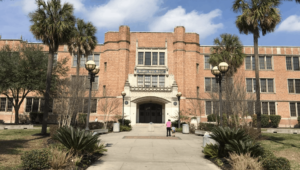Is School Segregation Still A Problem?

Is School Segratation Still a Problem by Halli Bayer first appeared on Studentsfirst.
It’s been fifty-nine years since the US Supreme Court told us that, “separate educational facilities are inherently unequal.”
But in terms of segregation, not much has changed since Brown v. Board. In fact, American schools are now more segregated by both race and class than they were 40 years ago.
While America’s student population is growing increasingly ethnically diverse, its public schools continue to reflect a highly segregated society:
- Fifteen percent of black students, and 14 percent of Latino students, attend schools where whites make up 0 to 1% of the enrollment, often called “apartheid schools.”
- Although just over half of the nation’s students are white, the typical white student attends a school where three-quarters of her peers are white.
- Half of the black students in Chicago and one third of black students in New York attend “apartheid schools.”
For most Americans, these statistics bring up an innate sense of injustice; but what is actually the problem with segregation?
For starters, segregation deprives students of the opportunity to learn alongside kids who are different than them. Secretary of Education Arnie Duncan recently spoke about the value of attending a diverse school:
“I was fortunate to go to an integrated school… all the way through K-12. And I don’t think I could do a job like this [if I] didn’t have that kind of opportunity. And far too many children today are denied that opportunity.”
Secretary Duncan is right – students of all ethnicities and economic classes benefit from attending diverse schools. Numerous studies have shown that integration in public schools is important for fostering tolerant adults. And integrated schools also can help prepare students for success in a twenty-first-century economy, as students from diverse schools are better able to work with diverse colleagues and partners.
Although the themes at the heart of Brown are still relevant today, there are differences between student achievement today and in 1954. Today, the number one predictor of a student’s academic achievement is not her race but rather her family’s level of income. And achievement gaps between low-income and high-income students are now much wider than those between black and white students.
This is why it’s particularly relevant that our schools are becoming more and more economically segregated. Not only do economically segregated schools deprive students of the opportunity to work with a diverse peer group, they also can make learning more difficult for students in high-poverty schools.
Study after study has shown that students of all economic classes who attend high-poverty schools have lower academic achievement than low-income students who attend economically diverse schools. In other words, the problem isn’t that schools cannot serve low-income students well, but rather schools often are not serving high concentrations of low-income students well.
Consider these findings:
- In math, low-income forth graders attending affluent schools are two years ahead of low-income forth graders attending high-poverty schools.
- The average middle-income student attending a high-poverty school scores at or below the average low-income student in an affluent school.
- Schools in Finland, which is often pointed to as a model of educational success, have the lowest degree of socioeconomic segregation of all of the 57 countries that participate in the Programme for International Student Assessment (PISA).
At the same time, there are many exceptional schools that defy these odds, indicating that it’s possible to overcome even high levels of concentrated poverty. And there is much work to be done regarding how districts allocate resources to the highest-need students, including the most important resource – highly effective teachers.
Meanwhile, as whole-scale transformation of our public education system progresses, school segregation remains problematic. It deprives students of important academic opportunities, and of the chance to learn to live and work in an increasingly diverse world.
Next week, I’ll write about some successful strategies that districts and states are using to create socioeconomic diversity in their schools.







0 Comments
Leave a Comment
Your email address will not be published. All fields are required.